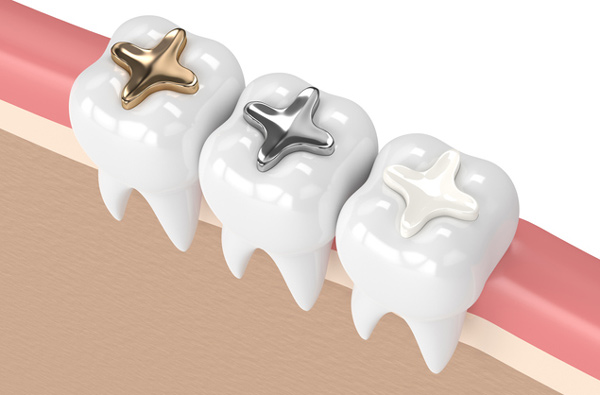 Dental fillings are a common and crucial part of modern dentistry. They help repair and restore teeth that have been affected by decay or damage, ensuring the health and functionality of your teeth. There is a lot to consider about fillings, from the different types available, to their advantages and how to maintain your dental fillings for better oral health.
Dental fillings are a common and crucial part of modern dentistry. They help repair and restore teeth that have been affected by decay or damage, ensuring the health and functionality of your teeth. There is a lot to consider about fillings, from the different types available, to their advantages and how to maintain your dental fillings for better oral health. Dental Fillings as a Treatment Procedure
Tooth decay and damage are very common dental problems that can lead to pain, infection, and tooth loss if left unaddressed. In fact, there is archaeological evidence that civilizations as old as those in ancient Egypt were also dealing with tooth decay. Fortunately, modern dentistry has given us a reliable and effective way to address the issue: dental fillings.
Fillings are a fundamental and widely used treatment procedure in the field of dentistry. It's a very common dental intervention used to restore teeth that have been damaged by decay or injury. This ensures their functionality and preserves the overall health of the oral cavity.
The main function of dental fillings is to address cavities or areas of a tooth that are affected by dental caries (decay). If these cavities are left untreated, you may find yourself suffering from tooth pain, infection, abscesses, and even structural damage. Dental fillings are very useful for this purpose. They restore the structural integrity of the tooth and prevent further deterioration. They also offer relief from the pain and discomfort caused by decay.
Types of Dental Fillings
There are two main types of dental fillings: composite fillings and amalgam fillings. Amalgam fillings have been used for a long time, while composite fillings are relatively new in comparison.

Composite Fillings
Composite fillings are also sometimes called tooth-colored or white fillings. They are made from a mix of resin and small glass particles, and are widely used for their aesthetic appeal. Their popularity is largely due to their ability to match the color of your natural teeth. There are several benefits of using composite fillings.
| • | Aesthetic Appeal: Composite fillings are practically indistinguishable from natural teeth, which makes them an excellent choice for areas of your mouth that are visible when you smile or speak. |
| • | Bonding Strength: Because composite material chemically bonds to the tooth, it provides additional support and reinforcement. |
| • | Minimally Invasive: Less tooth structure needs to be removed when placing composite fillings compared to amalgam fillings. |
| • | Reduced Sensitivity: Composite fillings are less likely to contract with temperature changes, minimizing sensitivity. |
Amalgam Fillings
Amalgam fillings, also known as silver fillings, have been used in dentistry since the 1830s. Amalgam is a mixture of several metals, mainly mercury, silver, tin, and copper. Amalgam fillings also have several benefits that may make them an attractive choice.
| • | Durability: Amalgam fillings are extremely durable and can withstand the forces of chewing and biting. This makes them particularly suitable for use in the back teeth. |
| • | Cost-Effective: Amalgam fillings are generally more cost-effective than composite fillings. |
| • | Longevity: With proper care, amalgam fillings can last for as long as 10 to 15 years. |
| • | Quick Placement: Amalgam fillings are relatively quick to place, which can be considered an advantage for some patients. |
Between the two, however, dental experts are largely moving away from amalgam. Part of this is due to the appearance of composite material, and amalgam fillings are more brittle, which can cause damage in the long term.
Placement Procedure
The process of placing dental fillings is very simple and is largely the same for both composite and amalgam fillings. The dentist will administer a local anesthetic to numb the area around the affected tooth, making sure you don't feel any pain during the procedure.
The decayed or damaged part of the tooth is removed, which leaves behind a healthy and clean space. In more severe cases of decay, a root canal treatment is required.
For composite fillings, the dentist will layer and shape the resin material, using a special curing light to harden each layer. This takes a longer time since each layer of resin requires care and time. In the case of amalgam fillings, the material is packed into the prepared space.
After shaping and polishing the filling, the dentist will ensure that it fits comfortably with your bite. A final inspection will be made to make sure the filling is securely in place, functional, and looks good.

Maintenance of Dental Fillings
To make sure your dental fillings last a long time, you do have to put some effort into maintaining them.
Oral Hygiene
The first step to this is oral hygiene. Maintaining good oral health practices includes regular brushing, flossing, and using an antimicrobial mouthwash. This helps prevent further decay and the development of new cavities.
Diet
Your diet also plays a role. Sugary and acidic foods and drinks can erode the filling material and contribute to decay. It can also cause damage to other teeth, which results in further problems.
Regular Checkups
Make sure you get routine dental check-ups. Our dentist will want to monitor the condition of your fillings for a while after you get them. It helps to detect any potential issues early on.
Bruxism
If you have a habit of grinding your teeth (a condition known as bruxism), this can contribute to filling erosion. A night guard can help you protect your teeth and fillings if you have this habit.
Repairs
If you notice any signs of damage or discomfort around your fillings, get dental help immediately! Any pain, sensitivity, or cracks are a concern and if left unaddressed, could actually lead to infections as well.
Maintain General Health
Your overall health can impact your oral health. Conditions like diabetes can affect the longevity of your fillings, so it's essential to manage any underlying health issues.
Dental Fillings in San Francisco
If you're looking for experts to handle your fillings, contact San Francisco Dental Arts is here at your service! We are dedicated to providing top-quality dental care for all of our patients in San Francisco. Schedule a consultation with Dr. Stanley Siu by calling 415-854-9396.


